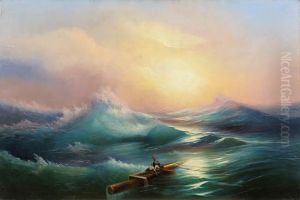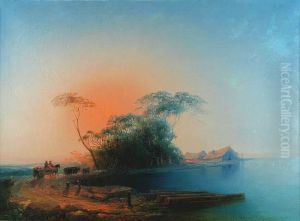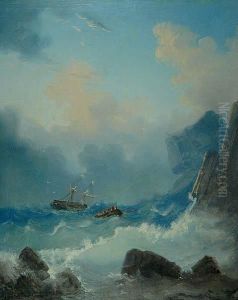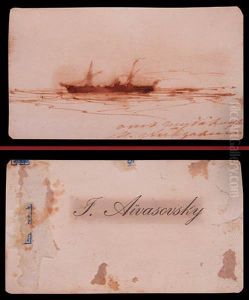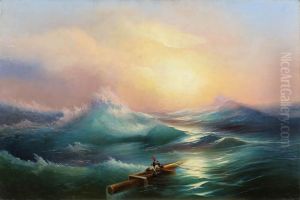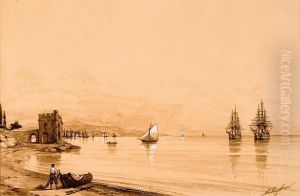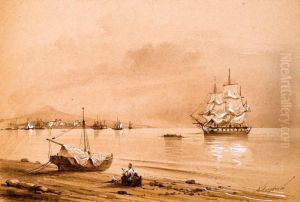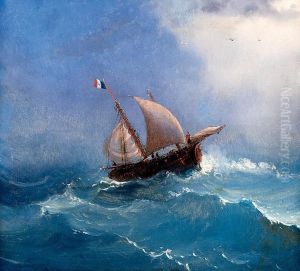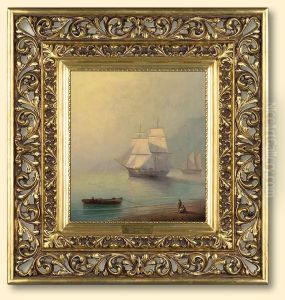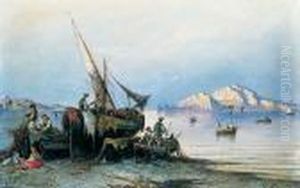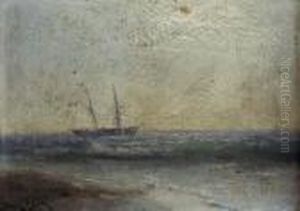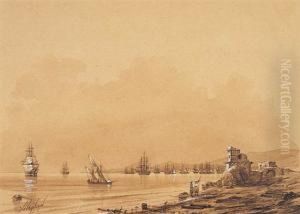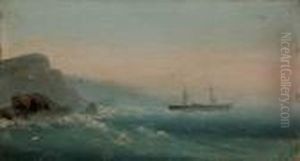Iwan Konstantynowicz Ajwazowski Paintings
Ivan Konstantinovich Aivazovsky was a Russian Romantic painter who is considered one of the greatest masters of marine art. Born on July 29, 1817, in Feodosia, Crimea, to a poor Armenian family, Aivazovsky displayed a talent for art at an early age. He was admitted to the Imperial Academy of Arts in Saint Petersburg at the age of 18, where he excelled and won several awards.
Aivazovsky's early work focused on the seascapes of the Crimea and the Black Sea, drawing inspiration from his childhood surroundings. His ability to capture the play of light on water and the dynamic motion of waves quickly earned him recognition. In 1840, he traveled through Europe, where he was influenced by the works of Claude Lorrain and J.M.W. Turner, further honing his skill in portraying sea elements with dramatic lighting and atmospheric effects.
Upon his return to Russia, Aivazovsky became the official painter of the Russian Navy, a position that allowed him to travel extensively along the coastlines of Europe and Asia. His experiences during these voyages provided him with an endless source of inspiration, leading to the creation of over 6,000 paintings throughout his career. His most famous works, such as 'The Ninth Wave' (1850) and 'Among the Waves' (1898), showcase his ability to depict the sea in all its moods, from tranquil to tempestuous.
Aivazovsky was not only celebrated for his seascapes but also for his contributions to the cultural and social life of the Russian Empire. He was involved in various philanthropic activities, especially in his hometown of Feodosia, where he funded the construction of schools and other public buildings.
Despite his extensive travels and international acclaim, Aivazovsky remained deeply connected to the Crimea throughout his life. He died on May 5, 1900, in Feodosia, leaving behind a legacy that continues to influence marine artists around the world. His work is characterized by its romanticism, technical skill, and an innate sense of the sublime, making him a pivotal figure in the history of Russian art.
